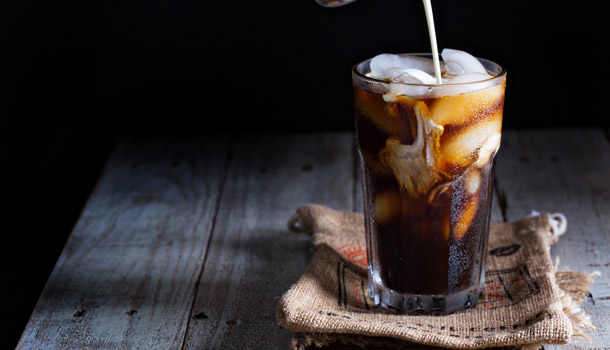How to brew a cup of decaf, decaf is only available in Starbucks?

For professional baristas, please follow the coffee workshop (Wechat official account cafe_style)
Coffee can stimulate the brain and increase alertness, but these effects may also be a drawback of coffee for some people.
In order to solve this problem, people continue to develop ways to reduce caffeine.
Origin and development
Friedrich, a German chemist. Fisher Dinan. Friedlieb Ferdinand Runge discovered caffeine in 1898. Since the end of the 19th century, scientists have been studying how to inhibit the effect of caffeine in order to remove caffeine and retain other substances in coffee. In 1903, Rosay, the coffee merchant. Ludwig Roselius commercialized decaffeinated beans for the first time; the technology matured after continuous improvement. However, the decaffeinated process starts with raw coffee beans, and decaffeinated coffee beans are not easy to bake and their aroma is greatly reduced.
Chemical solvent extraction (traditional method)
Caffeine is extracted by chemical solvent, which is divided into direct and indirect methods.
Coffee beans do not come into direct contact with solvents.
Water extraction or Swiss water treatment (SWP)
This method was invented in 1933 without the use of chemical solvents and was commercialized in the ○ era under the registered trademark The Swiss Water ®Process.
Carbon dioxide high pressure extraction
This method is relatively new and expensive. When the carbon dioxide is heated to 31 ℃ and pressurized to 200 bar, the carbon dioxide becomes almost as dense as the liquid, becoming the so-called "supercritical fluid carbon dioxide".
Provenance "my Coffee Life proposal" / Sancai Culture publication
Important Notice :
前街咖啡 FrontStreet Coffee has moved to new addredd:
FrontStreet Coffee Address: 315,Donghua East Road,GuangZhou
Tel:020 38364473
- Prev

Starbucks develops and ploughs Shanxi market and insists on community voluntary service.
The exchange of professional baristas please follow the coffee workshop (Wechat official account cafe_style) Starbucks, a global coffee industry leader brand with a history of 46 years, has come to Datong, Shanxi Province, to pay tribute to the historic and cultural city of Datong with its exquisite coffee culture, the first store of Starbucks Datong, stationed in Datong Wanda Shopping Mall, and opened on October 20th. Push away Starbucks
- Next

Drinking coffee is a fortune teller? Coffee reveals your potential personality!
Communication of professional baristas Please follow the coffee workshop (official Wechat account cafe_style) before going to work every day, you must make a cup of coffee before you can really wake up! When you get up during the holiday, you need a cup of coffee to feel that the holiday really begins. Many people have the habit of drinking coffee and have the symptoms of coffee addiction. American psychologist du Vasula visited more than 1,000 people.
Related
- What is the standard process for the purpose of coffee cup testing? What is the difference between hand-brewed coffee and cup testing?
- How to use hand-brewed coffee paragon small golden balls? How does cold coffee lock in the aroma of coffee?
- Is American coffee black? What is the difference between American coffee and drip coffee?
- Unexpected! Well-known tea beverage brand Lele Tea will withdraw from the Zhengzhou market!
- Starbucks enters the fashion and beauty industry?! Netizen: Give me an ice American eye cream
- Why can American refills for free? The difference between Americano and American drip pot coffee
- Being chased out of the rain in front of Starbucks?! Store: Sheltering from rain under umbrellas poses a safety hazard
- The white moonlight has changed?! Lucky launches "Big Winter Pear American"
- Hand-brewed coffee three-stage method, high-sweet and universal brewing method to share! What does the high sweet water level of hand-brewed coffee mean?
- What is the difference between raw, refined and full espresso coffee? How to extract espresso and taste good?

